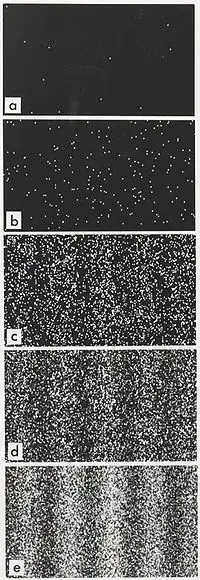This is something that has confused me whenever I read about the double-slit experiment.
When the double-slit experiment is performed, I understand that the resulting pattern for the sequentially fired photons will be an interference pattern, unless the path of the photon is observed or measured, in which case the resulting pattern will be that of a particle i.e. like firing tiny marbles through.
Why doesn't the observation of the pattern count as an observation of the photons' paths?
Edit: Wow what a great response. Thanks all you who took the time to contribute an answer, it is certainly appreciated.
What I have taken away from this is that the pattern produced on the screen is an observation / interaction that causes the photon to 'localise' as is the observation of the photon as it passes through the slits.
The differentiation is one of chronology - the observation or inference of exactly which slit the photon passed through causes the photon to localise before passing through and so it behaves like a particle. Observing the photon after passing through the slits in a way that does not reveal which particular slit it passed through, localises the electron according to the wavefunction complete with interference caused by the slits.
The key difference then is at what point the photon is observed / interacted with and therefore localised - either close enough to the slits to reveal which slit it passed through, or far enough such that it remains uncertain. The former will produce the two bar pattern, the latter the interference pattern.

